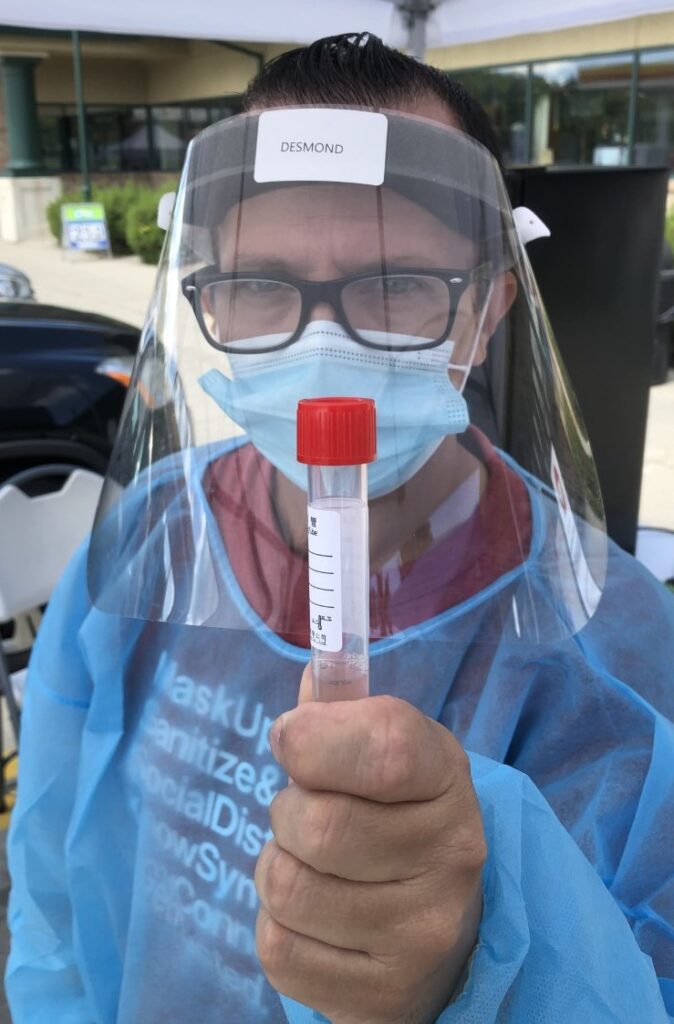Workplace Covid-19 screening tests continue to evolve
TORONTO, Ont. – Workplaces looking to screen employees for Covid-19 are beginning to access cheaper and quicker tests, but DriverCheck’s corporate medical director offers a warning.
“Testing does not eliminate transmission risk. We still need to remain diligent,” Dr. Jonathan Davids said in an online presentation for the Private Motor Truck Council of Canada (PMTC).
Even when workplace screening programs are in place, strategies such as screening questionnaires, wearing masks, and physical distancing will continue to be vital tools for protecting employees, he said.

But there is still a role for testing in a bid to keep Covid-19 from spreading – and it’s not limited to the diagnostic tests that focus on those who show symptoms or been exposed to a known source of the virus.
Forty percent of those who have Covid-19 will never show symptoms but can spread the virus to others, Davids explained. In other employees, the symptoms may not begin to emerge until Day 5 after an infection. That means they’ll continue daily activities and infect others along the way.
“Testing identifies infections and enables one to quickly isolate individuals,” Davids said.
DriverCheck itself has already performed about 10,000 tests for farm workers, truck drivers, and the general public. Some of those came through a voluntary pilot project at select truck stops and fleet locations in southwestern Ontario.
Understanding test types
“What you really want to understand is a testing strategy in your workplace,” Davids said.
That requires a close look at the timelines associated with the different testing processes.
PCR (Polymerase Chain Reaction) tests remain the gold standard being used today, although the “antigen” tests used in a series of pilot projects will deliver quicker, cheaper results. The antigen-based tests are expected to be available in larger quantities during the first quarter of 2021, he said.
The PCR tests can be processed in one to seven days, and are best used two to seven days after symptoms begin to appear. Results typically arrive two to five days after a sample is collected.
These tests can still miss 30% of the people who have the virus, but they’re more than 99.5% sensitive when recording positive results. “If you get a positive test,” Davids said, “you can take that to the bank.”
Portable devices available for workplaces can process about 30 to 40 tests per day.
In contrast, the cheaper antigen tests can be processed in 15 to 20 minutes, and they’re best used in a period that ranges between two days before symptoms appear and three days after symptoms coming about.
“The antigen test is actually better picking up the disease earlier on,” he said of the timelines. In other words, it can pick up infected workers who might still pass screening questions and not display symptoms. “If they’re positive, you’ll have an answer within about 20 minutes.”
An Ontario pilot project is testing the approach in select workplaces, and covering the cost of materials needed to test workers up to three times a week. The last eight-week block of those tests is scheduled to begin in February.
There is the promise of even better tests on the horizon.
“We all want an ideal test – a cheap, fast, accurate, reliable test. But for now that doesn’t exist,” Davids said. Not yet. The U.S. is researching CRISPR (Clusters of Regularly Interspaced Short Palindromic Repeats) that would lead to the “ideal” accurate, reliable, fast, and cheap at-home test.
When positive tests are recorded, public health departments are ultimately responsible for the contact tracing that determines who else may have been exposed. But Davids says it’s also a good idea for fleets to conduct an internal process in the meantime to identify anyone who came into contact with the worker who tests positive.
That close contact includes anyone who spends 15 minutes or more within two meters of someone who has Covid-19.
Have your say
This is a moderated forum. Comments will no longer be published unless they are accompanied by a first and last name and a verifiable email address. (Today's Trucking will not publish or share the email address.) Profane language and content deemed to be libelous, racist, or threatening in nature will not be published under any circumstances.